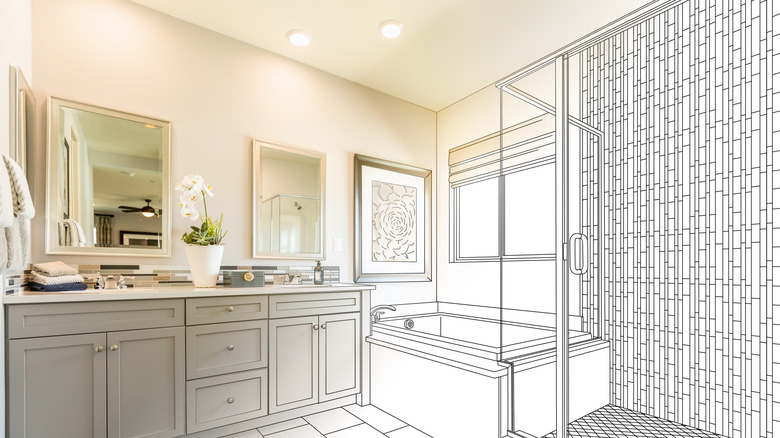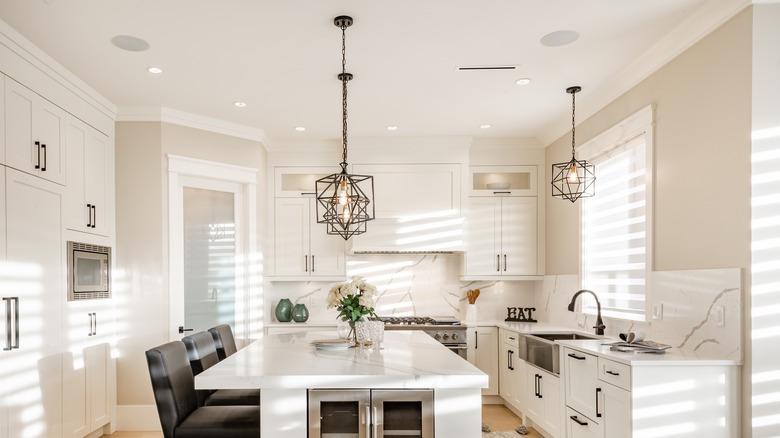The Trick You Should Know When Planning A Recessed Lighting Layout
Almost every home benefits from recessed lighting, which provides a base layer of brightness and can be used to add additional light in specific areas. Aesthetically, these ceiling-installed fixtures don't add to the visual weight of a room but only increase the amount of light in the space, making them an incredibly versatile option for just about any home.
If you're adding recessed lights to a room, there's a trick to planning out the layout correctly, and it only requires you to know one thing: the height of your ceilings. Once you know this, divide the number in half, and the amount you're left with is how much space you should leave between each one. For instance, in a room with 10-foot ceilings, the fixtures should be spaced 5 feet apart. However, while this is a great starting point, it shouldn't always be followed perfectly, as there are specific scenarios where a room may need more or less recessed lighting depending upon the function of the fixtures.
The three functions of recessed lights
Recessed lights can be used for three different functions. The first is for ambient lighting, or the general brightness of a space. When used this way, the ceiling-installed fixtures act as the base, upon which you can layer on additional light sources such as lamps or pendants. The second function is accent lighting. In this case, they must be pointed toward the architectural feature or space that can use extra warmth or illumination. Finally, these fixtures can also be used for task lighting, such as illuminating an office desk or a kitchen countertop.
Once you've determined what functions you want your recessed lights to serve, it's time to sketch out your space. After taking the measurements of all the walls, draw a layout of the room on grid paper, noting where you may need extra recessed lights. Then, starting with either the focal point or the center of the room, use the trick above to place fixtures where they need to go, allowing yourself to break the rule (if necessary) to add more brightness to a particular area.
Considering other light sources
Most homeowners don't use recessed lights to fulfill all three of the above functions. Instead, they make a statement with other fixtures, such as sconces, lamps, pendants, and chandeliers, which can add additional ambient, accent, or task lighting. These pieces are often chosen to either add a decorative element or to illuminate a certain area. For example, it's common for homeowners to place a pair or a trio of pendants above the kitchen island or to include wall sconces on either side of a piece of art.
If you decide to add these elements, you may not need as many recessed lights as you previously imagined. This is because you don't want your ceiling-installed fixtures to be right on top of your other light sources. Therefore, note any other fixtures when sketching the room and keep your recessed lights a few feet away from them. That being said, it's always better to have abundant light sources than to create a design draped in shadows, so opt for more over less when possible.


